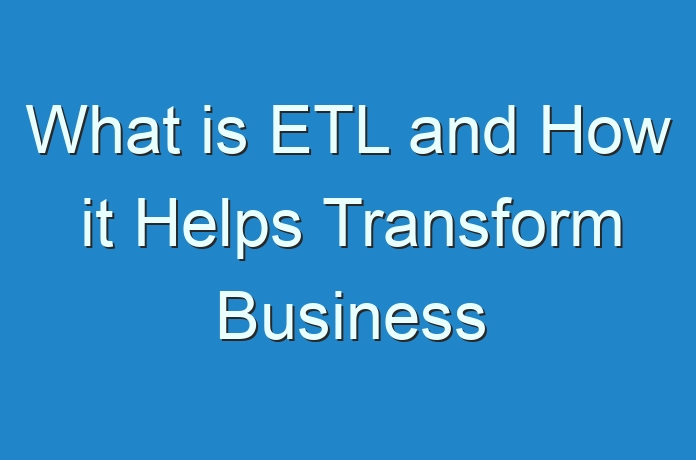
Extract, Transform, and Load (ETL) is a term that you must have heard a lot while performing business transformation and data migration. But what is it and how can it help your business prosper?
In this article, we are going to discuss:
- What is ETL
- How Can It Transform Your Business?
- Which ETL Tool Should You Use?
- Why Using ETL is The Best Migration Strategy
What Is ETL?
ETL in its simplest form means Extract, Transform, and Load. It means, getting data from multiple sources and then loading them on a data warehouse.
The purpose of ETL is to unify data of multiple formats in a single format also known as data integration. They do it by adding relevant transformations so that it can be used for Online analytical processing (OLAP).
Business around the world rely on data to make business decisions. Everything from increasing inventory, to hiring workers, to optimizing processes relies on data-driven decisions. However, if companies do not have resources available to create relevant data visualizations, how can they make better decisions? This is where ETL helps them. It loads each relevant data point to a data warehouse that businesses can use to make relevant decisions.
ETL consists of three important functions. Let’s learn about each function in detail.
-
Extract
Extracting data is the act of targeting a data source and pulling the data from it so that it can be transformed, integrated and stored elsewhere. We can target many different databases of various types for extractions, and we can run each extraction on a schedule so that you get a regular flow of current and accurate data.
-
Transform
Data is not always available in your desired format. It needs to be transformed before it can be used for OLAP purpose. That’s where ETL software comes in. It transforms the data by using pre-built transformations.
An example is when you want only one value from a database. However, you can’t extract that value alone. You will have to extract the whole table. So, ETL will bring it to a staging area where that value or data point will be extracted. If it is a column of data points, it will be extracted and moved to the data warehouse. All other data will remain the same.
-
Load
Finally, once the data is prepared and transformed, it is loaded into the destination – which is in most cases a data warehouse. The loaded data can be used in a variety of ways.
The most common load target is a data warehouse, where you can keep it for future analysis and tracking trends.
Which ETL Tool to Use for Business?
An ETL tool help businesses easily load data from multiple data marts and data lakes to a single data warehouse. When the ETL process is used to load a database into a data warehouse , each phase is represented by a layer.

Source: Astera Centerprise
The staging layer allows the ETL tool users to fetch the data from the source and edit in the staging area. This way neither the source data is overwritten, nor is wrong data populated in the destination drive, reducing the number of errors.
Similarly, ETL tools also allow pushdown optimization that directly loads the data from a source to a destination, bypassing the staging area. Pushdown optimization allows all transformation to be done on the destination drive. It saves more time and is used for real-time data streaming.
Why Using ETL is The Best Migration Strategy
ETL tools offer several connectors for migrating data from a source database to a destination warehouse. Without an ETL tool, migrating data from multiple sources can take a lot of time. Before ETL tools, companies had dedicated ETL managers who used to create data connectors for migrating data from legacy systems. A single migration tool over a week. With ETL tools, these migrations are now possible within minutes.
Companies need to understand that data requirements of companies are not going to decrease. Therefore, using the right ETL tool is the need of the hour. Astera Centerprise data integrator is one such tool that can complete ETL jobs within seconds. It offers over 40 connectors that allow users to easily move data from any data lake to a data warehouse without problem.





